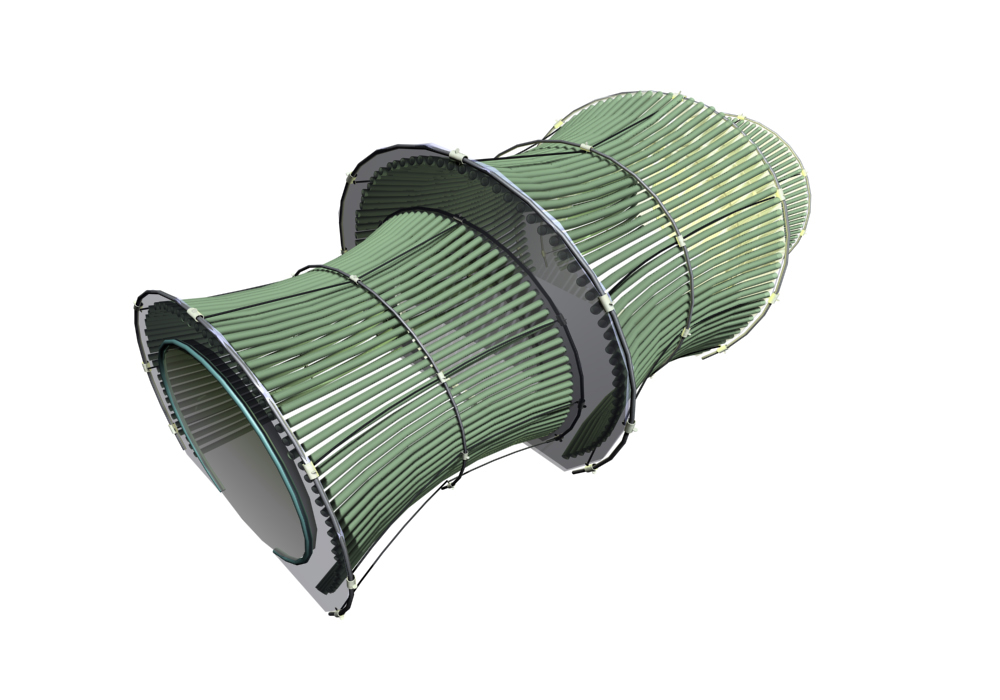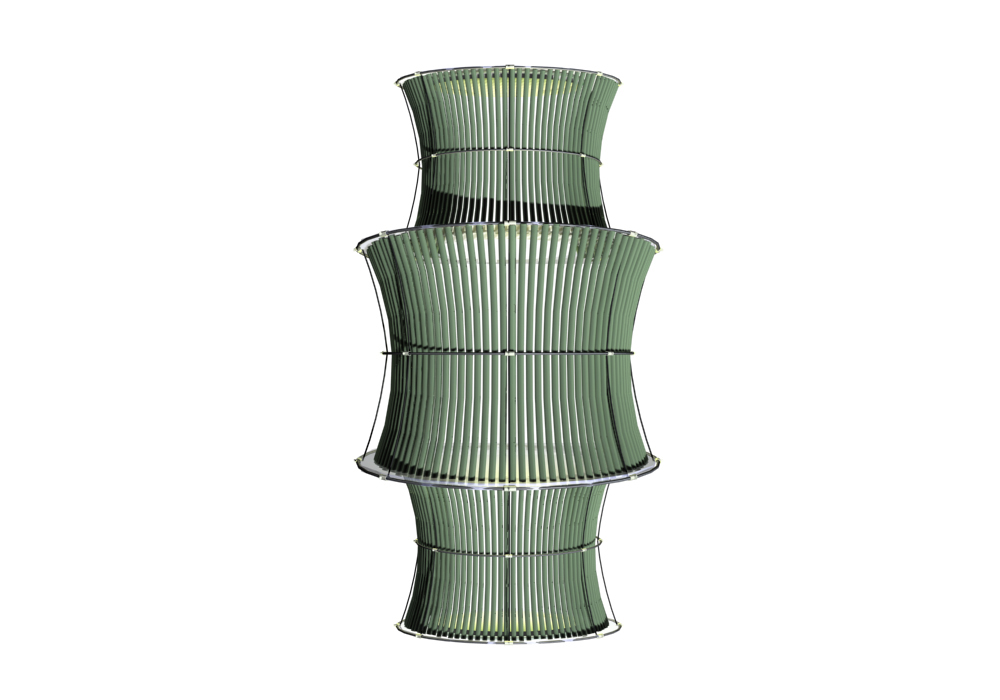
Eco Desert Tent
Equisetum: “dune grass in the desert”, is a concept that attempts to embrace the idea of adaptation and harmony with the natural environment
A reasonable definition of Green Design is the creation of something that is helpful rather than harmful to the natural environment. A better definition could be the creation of something that is “Pure” and adapts to the environment. Design may or may not stand the test of time. This can be related to Charles Darwin’s theory of evolution, survival of the fittest species. If design is able to thrive in its context, it will survive. If a creation can breathe the air and drink the water in its surroundings, it will thrive. If it can change as the elements around it do, it will thrive for longer.
Equisetum is the scientific genus of an ancient grass that has survived in many different environments for thousands of years. It is a strong species that has a unique growth pattern that “telescopes” in modules. The basic idea for the dune grass in the desert tent design is to use the special as well as environmental characteristics of the grass to create a shelter for hikers. The “dune grass in the desert tent”, is sustainable in its conceptual composition, its materials, and its flexibility. The form directly mimics that of blade of dune grass. The tubes within the sheathing can hold materials such as water for passive solar heating, graphic material, or wiring for lighting or speakers.
The module configuration allows for any type of configuration or number needed for community survival. The different sizes of tent module create opportunities for interior day lighting, passive ventilation, site night lighting, and solar heat gain. The sheathing for the dune grass tent resembles the outer shell of a blade of equisetum. The cells in the outer shell of the grass perform photosynthesis. The tubes in the sheathing store water and heat. They also create opportunities for light and sound as they are completely interchangeable. The tubing and sheathing go over the structure at the same time. It is securely fastened to clips on the structure but can be removed easily to change the tubes. The tension ties go on last to secure the tent for wind loading. The entire assembly can be reconfigured in minutes to adapt to new situations.





